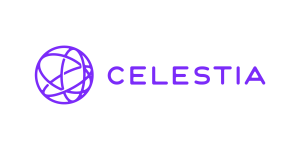
Celestia: A Breakthrough in Blockchain Scalability and Modularity
The blockchain space is continuously evolving, with new technologies emerging to solve the long-standing issues of scalability and efficiency. Celestia is one such innovation, offering a modular data availability network that dramatically shifts how blockchains operate. By decoupling key components like execution, consensus, and data availability, Celestia provides a more scalable, secure, and customizable solution for decentralized networks.
In this blog post, we’ll dive into Celestia’s architecture, explain how it works, and explore the role of its native token, TIA, in maintaining the network’s integrity.
What Makes Celestia Different?
Traditional blockchains, like Bitcoin and Ethereum, are built on monolithic architectures. These systems bundle the consensus, execution, and data availability layers together, meaning every node in the network must perform all these functions. While effective for security, this approach limits scalability. The more complex the blockchain becomes, the harder it is to support a growing number of users and larger transaction volumes without increasing the cost and resource burden on each node.
Celestia’s modular approach changes this dynamic by separating these layers, allowing each to be optimized independently. Specifically, Celestia focuses on handling consensus and data availability while leaving execution to external systems. This shift not only boosts scalability but also enables developers to easily deploy their own blockchains without needing to worry about infrastructure complexity.
The Core of Celestia: Data Availability Sampling (DAS)
One of Celestia’s groundbreaking innovations is its solution to the data availability problem—the challenge of ensuring that all transaction data in a block is available for verification. Traditional blockchains require nodes to download and store entire blocks, making it difficult for smaller, resource-limited nodes to participate.
Celestia solves this with data availability sampling (DAS). Instead of downloading entire blocks, light nodes randomly sample small parts of the data, called shares. If enough shares are retrieved and verified by light nodes, it indicates that the whole block is available. This method significantly reduces the resource requirements for light nodes, allowing more participants to join the network without sacrificing security.
The more light nodes that participate, the more data the network can handle, meaning Celestia can scale as user numbers increase. This marks a significant improvement over traditional blockchains, where scaling typically leads to higher costs for nodes.
Monolithic vs. Modular Blockchains
In a monolithic blockchain, all nodes must handle every task: verifying transactions, ensuring data availability, and maintaining consensus. This means the system becomes increasingly difficult to scale as transaction volumes grow, leading to high costs and inefficiencies.
Modular blockchains, like Celestia, separate these tasks into distinct layers:
- The execution layer handles smart contracts and transactions.
- The consensus layer ensures all nodes agree on the transaction order.
- The data availability layer guarantees the network has access to the necessary transaction data.
By focusing on just the consensus and data availability layers, Celestia allows developers to create application-specific blockchains or rollups for the execution layer. This makes Celestia a more flexible, efficient, and scalable blockchain network compared to monolithic chains.
The Role of the TIA Token
Celestia’s native token, TIA, plays a crucial role in securing the network, paying for data storage, and enabling governance.
- Paying for Blobspace: Users who want to store data on Celestia must pay for blobspace (the data storage capacity in each block) using TIA. The cost is determined by the amount of data stored and current demand. This system ensures efficient use of network resources and incentivizes decentralization.
- Staking TIA: Validators on the Celestia network are responsible for producing blocks and maintaining consensus. Validators are required to stake TIA tokens, which helps secure the network. The more TIA staked, the higher the chance a validator has of being chosen to propose the next block. In return, validators receive rewards in TIA for their participation, providing a strong incentive for network security. Users can also delegate their TIA to validators to earn a share of rewards without running their own node.
- Governance: TIA token holders have the power to influence the future of the network. Through on-chain governance, they can vote on critical decisions like protocol upgrades or changes to network economics. This ensures that the network evolves in a decentralized, community-driven manner.
Why Celestia is the Future of Blockchain Scalability
Celestia’s modular architecture and innovative use of data availability sampling represent a major leap forward in the blockchain space. By allowing light nodes to verify data availability without needing to download entire blocks, Celestia makes scaling blockchains far more efficient.
Additionally, the flexibility offered by Celestia’s modular approach enables developers to create their own blockchains, customized to their specific needs, without having to worry about consensus or data availability. This fosters innovation and opens the door to a new generation of decentralized applications that can grow without facing the same scalability bottlenecks that hinder monolithic blockchains.
The TIA token serves as the backbone of the Celestia network, incentivizing security, paying for storage, and allowing token holders to govern the network’s future. With these innovations, Celestia is well-positioned to play a central role in the future of blockchain technology.
Conclusion
Celestia’s innovative approach to blockchain scalability through modular design and data availability sampling offers a robust solution to the challenges faced by traditional blockchains. By enabling light nodes to verify large amounts of data efficiently and decoupling the execution layer, Celestia opens the door to scalable, secure, and customizable blockchain networks.
As more developers and users begin to see the benefits of this approach, Celestia is poised to lead the way in creating a new ecosystem of scalable blockchains. Whether you’re a developer looking to launch your own blockchain or a user interested in a decentralized, scalable network, Celestia offers the tools and infrastructure needed for the next evolution of blockchain technology.
